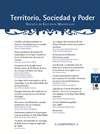Resumen
Resumen: El estudio de la ocupación altomedieval de la vertiente noroeste de la Sierra da Estrela ha permitido identificar tres momentos: un primer momento que abarca los siglos vi a viii y que se caracteriza por la persistencia de características del poblamiento romano; un segundo momento que abarcaría los siglos viii a x y que se encuentra marcado por la inestabilidad de las fronteras entre los mundos cristiano y musulmán, y, por último, una tercera etapa, que englobaría los siglos xi a xii, en que ya se hace notar la intervención de un poder más centralizado en este espacio, en un claro proceso de señorialización.
Palabras clave: Sierra Da Estrela, Alta Edad Media, territorio, poblamiento, incastellamento, frontera,
Resumo: O estudo da ocupação alto-medieval da vertente noroeste da Serra da Estrela permitiu identificar três momentos: um primeiro momento que abarca os séculos vi a viii e que se caracteriza pela persistência de características do povoamento romano; um segundo momento que abrangeria os séculos viii a x e que se encontra marcado pela instabilidade de fronteiras entre os mundos cristão e muçulmano; e por último uma terceira etapa, que englobaría os séculos xi a xii em que se denota já a intervenção de um poder mais centralizado neste espaço, num claro processo de senhorialização.
Palavras-chave: Serra da Estrela, alto-medieval, território, povoamento, encastelamento, fronteira.
Abstract: The area under analysis comprises an extensive corridor of plateaux intersected by abrupt slopes and delimited by the Mondego River, to the North, and the foot of Estrela Mountain, to the South. This Mountain clearly dominates the region, feeding the Mondego’s basin through its numerous watercourses. All this is a part of the mountain system that crosses Iberia in an ENE-WSW axis, in the westernmost edge of the central mountainous ridge that separates the Douro and Tagus mesetas. Both the Mondego River and the eastern slope of Estrela Mountain are thus the major geographical features of this territory, which has been one of the most important natural passages in the Portuguese history.
Chronologically, this study aims to characterize the changes on the settlement strategies that have occurred between the peninsular unification under the Visigothic crown, in the 6th century, and the publishing of the first privilege’s charts to these populations, in the second half of the 12th century by the first Portuguese kings.
Medieval studies on this region are rare, given the scarce number of written documents, which are mostly from the 12th century. Therefore, toponymic analysis, archaeological survey and systematic excavation of selected sites have been the proxies used to approach these past societies in their environment.
The interpretation of the data so far obtained suggests the existence of changes in the strategies of occupation of this region and in the way its resources were exploited. Several factors can be detected underlying these changes, its majority being of political and social nature.
The reorganization of these populations was forced by the social and economic changes derived from the progressive disintegration of the Roman world longside the conquests started by the Muslims when they first entered in Iberian Peninsula. This reorganization of the local populations was directed both towards their own protection and in the search for economic activities that could take place in accordance to these times of military instability. Like in so many regions elsewhere in Iberia, the intervention of a more centralized power becomes increasingly notorious by the end of the Early Middle Age.
Despite the scarcity of the available data, it is possible to identify three different phases during which the dominant settlement strategy has changed.
The first, comprised between the 6th and the 8th centuries, is characterised by a settlement typical of the previous Roman period. Some ancient Roman villae, like Aljão and Freixial, become central places, aggregating the population.
The second, from the 8th to the 10th centuries, is marked by instability of frontiers between Christian and Muslim worlds, which has resulted on the occupation of naturallydefensible places such as Penedo dos Mouros or Castelo.
Finally, a third phase, during the 11th and 12th centuries, is marked by the above-mentioned intervention of a more centralised power, of which the castles located on the slopes of the Estrela Mountain are a testimony.
Keywords: Estrela Mountain, Early Middle Age, territory, settlement, fortifying, frontier.

